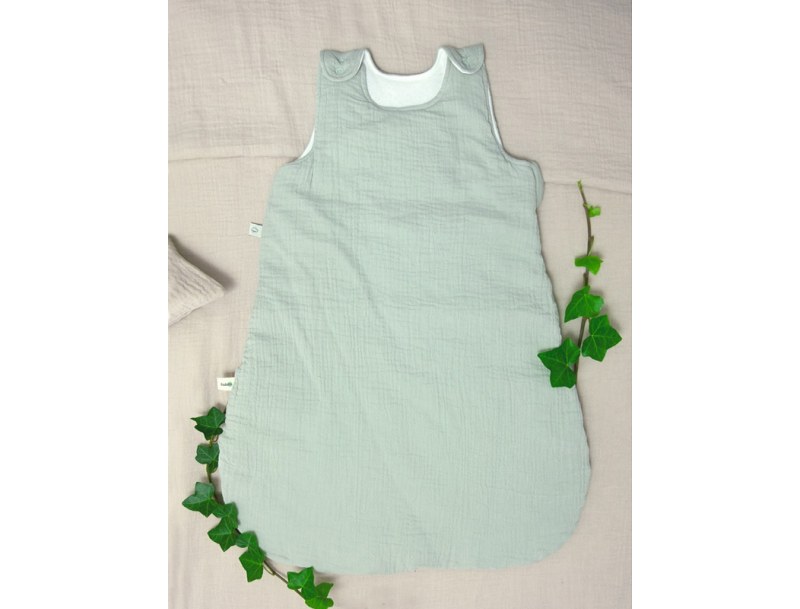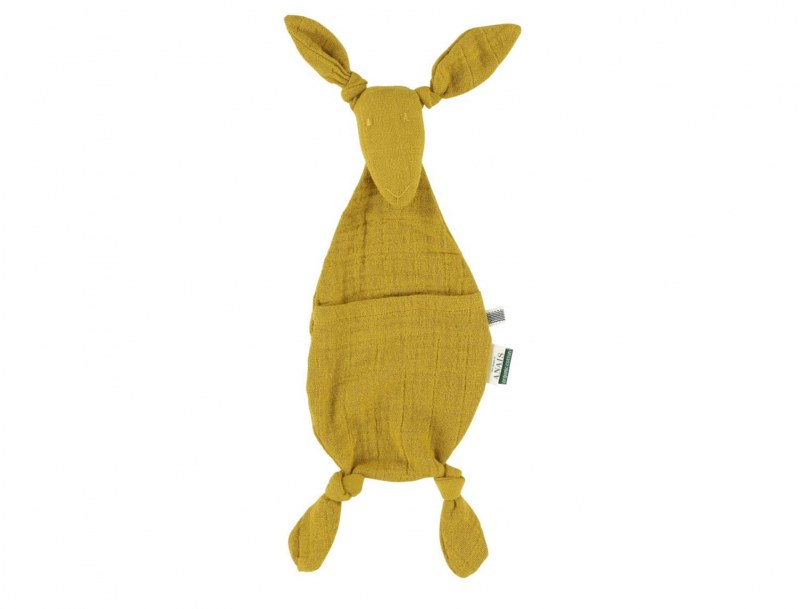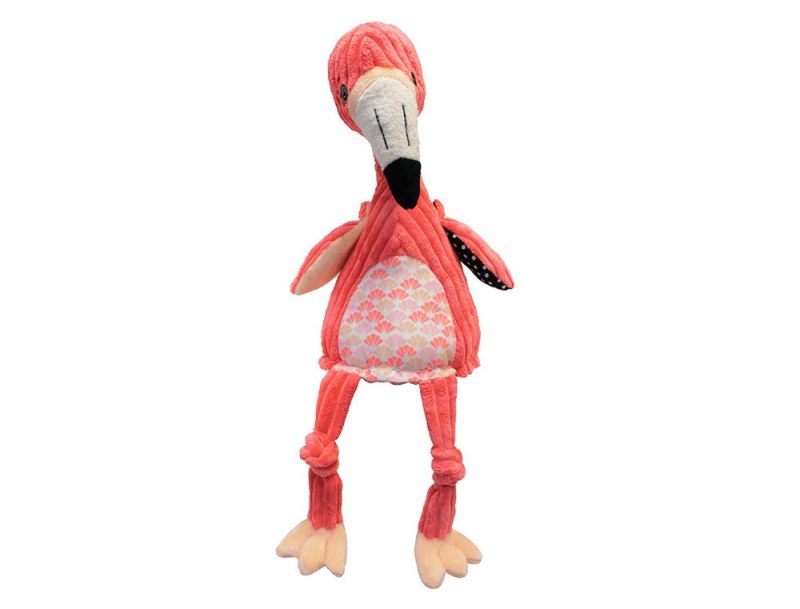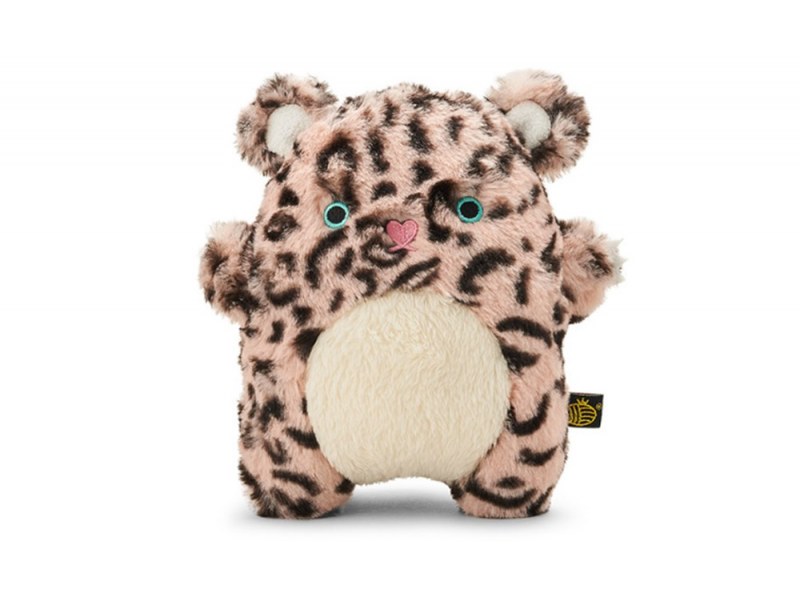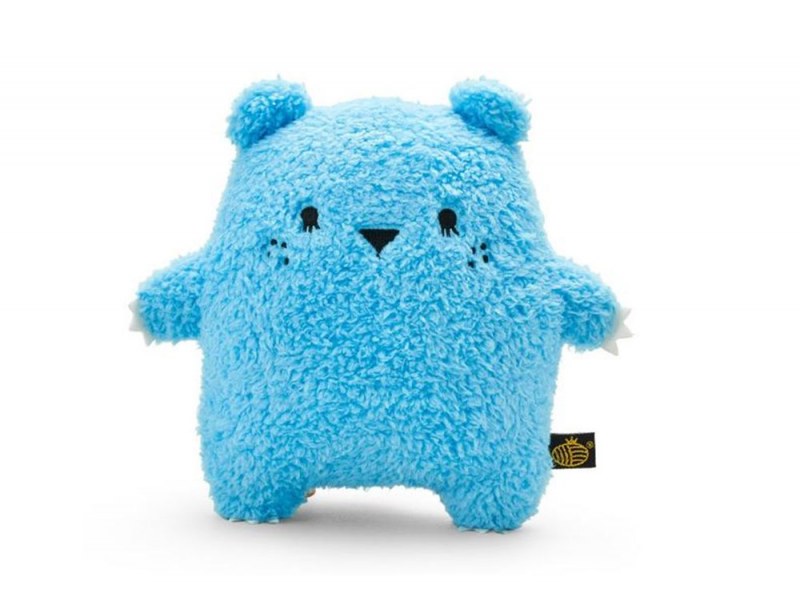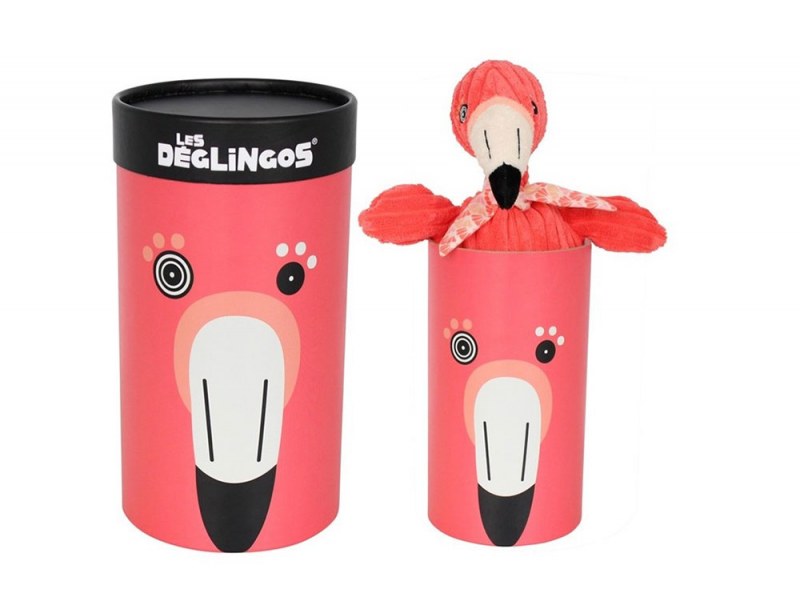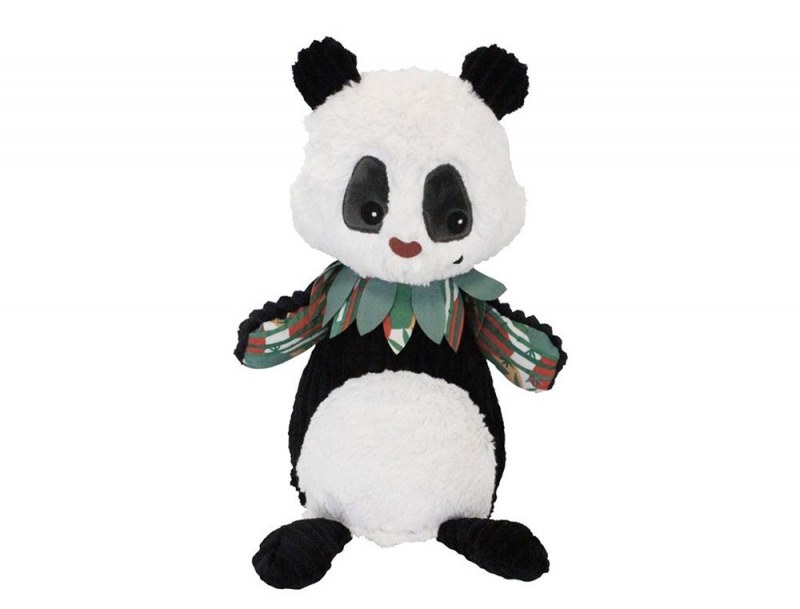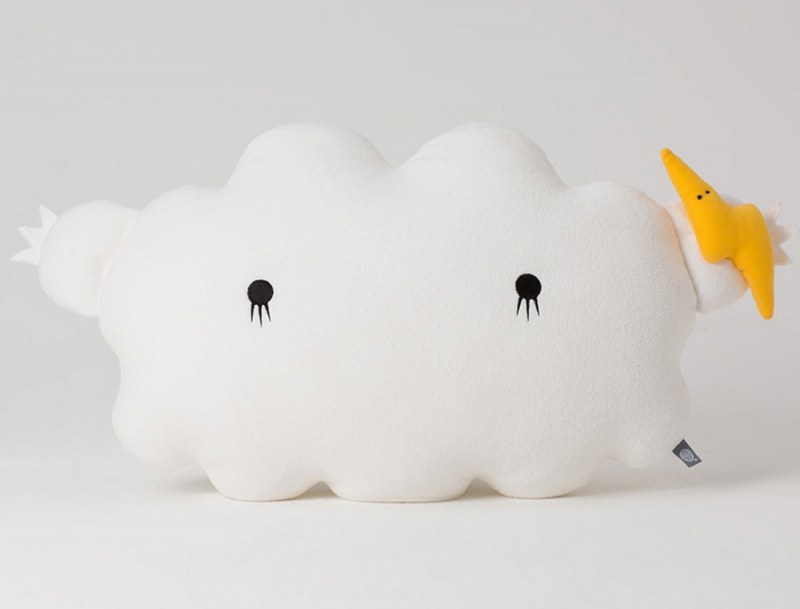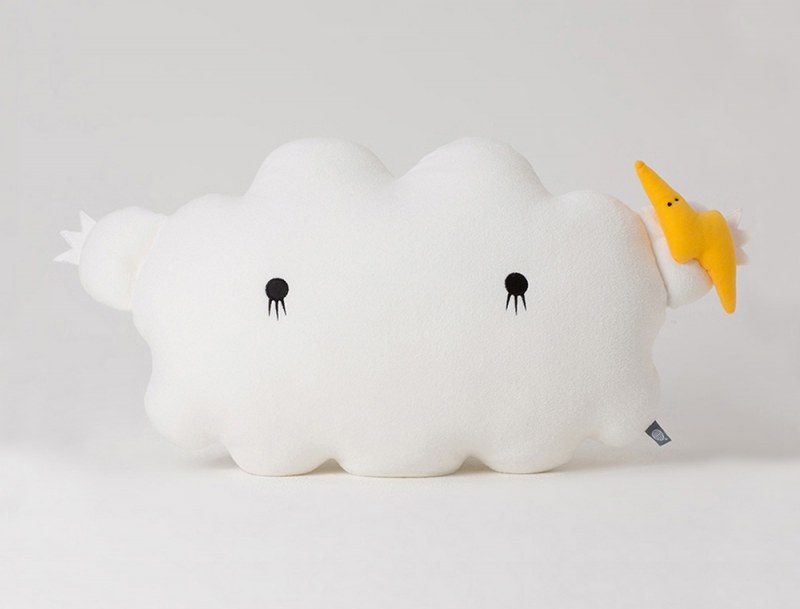At what age can you safely leave a comforter in a baby's bed?
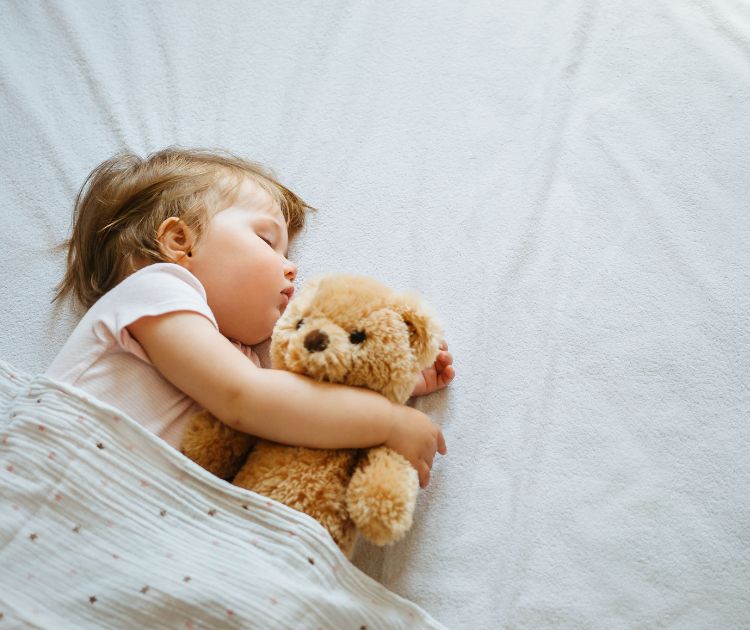
Comfort toy in the baby's bed:
at what age?
As soon as baby arrives, many parents want to offer them a comfort toy for reassurance. But when can we really let them sleep with it? The answer is clear: not before 6 months. Before this age, babies don't yet have the right reflexes to protect themselves if the comfort toy obstructs their breathing. And even after 6 months, we need to remain cautious.
Let's look together at the signs that show baby is ready, the precautions to take, and how to choose a truly safe comfort toy for the night.
Why wait 6 months before introducing a comfort toy?
From 6 months... With vigilance
Before 6 months, infants are not able to move their head easily or remove an object placed on their face. Their muscle strength is still limited, and this can put them in danger if a comfort toy blocks their breathing during sleep. This is why pediatricians strongly advise against placing an object in the bed before this age.
From 6 months, some babies develop enough strength to turn over, manipulate a light fabric or toy, and most importantly, to move it away if it bothers them. These are important motor skills that can make the introduction of the comfort toy safer. However, it's necessary to carefully observe the child's development, as not all babies progress at the same rate.
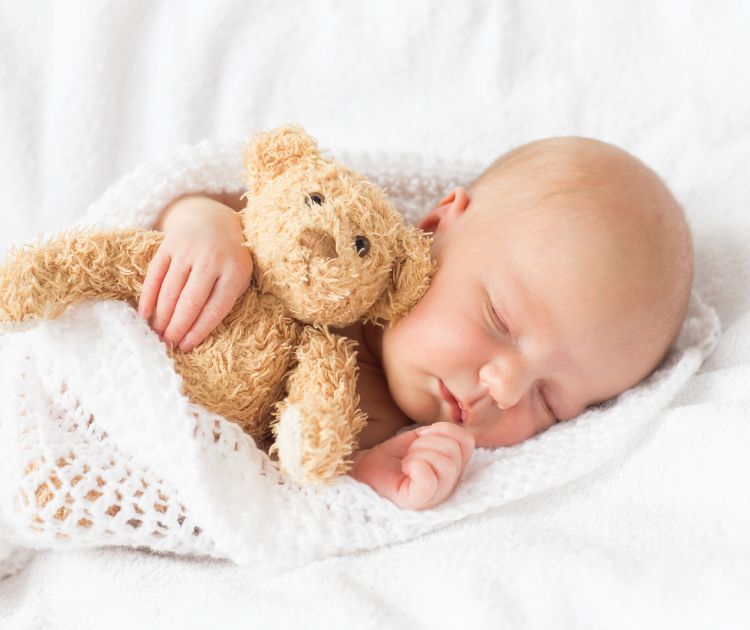
What if we waited until 12 months? Expert opinions according to countries
In some countries, the recommendations are even stricter. In the United States, for example, health professionals advise waiting until the child is at least one year old before leaving a comfort toy in their bed. The idea is to be sure they are autonomous enough to move, breathe freely, and react if they feel uncomfortable.
On the other hand, other cultures allow babies to sleep with a comfort object earlier, sometimes from birth, but always under supervision. What makes the difference is not just age: it's mainly how the baby sleeps (in a separate bed, co-sleeping, in a bassinet...), and the type of object offered. In the end, each parent must adapt to their child's rhythm, while putting safety first.
It is therefore important to take these different elements into account to determine the ideal time to introduce a comfort toy in your child's bed, always prioritizing their safety and well-being.
To learn more about safety rules and standards to follow in the baby's room, discover our article "Setting up the baby's room: standards and safety".
How to recognize if my baby is ready for a comfort toy?
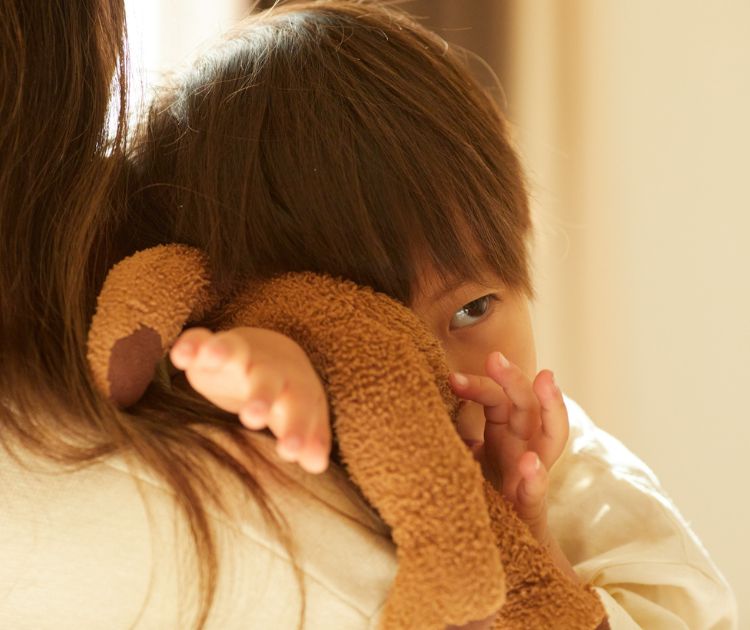
There's no magic age. But certain signs show that a baby is capable of sleeping with a comfort toy safely. If they turn over easily, if they know how to grab an object and manipulate it, if they can push it away if it's too close to their face, then we can start considering introducing the comfort toy.
We can actually observe these skills during awake times: if your baby plays with their comfort toy, holds it without difficulty, or reacts when it's in contact with their face, these are positive signs. You can then offer the comfort toy at nap or bedtime, but always remain vigilant in the beginning.
How to choose a truly safe comfort toy for the night?
Choking risk factors to consider
You're probably wondering what characteristics of comfort toys can be dangerous for your baby. Here are some elements to watch out for:
Characteristic | Potential risk | Recommendations |
Size and Weight | Too big: risk of suffocation if it covers the face. Too small: easily lost and replaced by a dangerous object. | Suitable for the child's age and size. Small and light for infants. |
Materials | Non-breathable: risk of overheating and excessive sweating. Non-hypoallergenic: risk of allergies and irritations. | Prefer natural breathable and hypoallergenic materials (organic cotton, bamboo). |
Detachable elements | Buttons, ribbons, plastic eyes: risk of ingestion and choking. | Avoid comfort toys with removable accessories. Check the strength of the seams. |
Long fur | Risk of ingesting fur which can cause choking or irritation. | Prefer comfort toys with short and well-fixed fur. |
General condition | Wear loose seams stuffing escaping: risk of ingestion and choking. | Regularly inspect the comfort toy and repair or replace it if damaged. |
Legend: This table describes the characteristics of comfort toys that can present a risk to babies' safety. It is essential to choose a comfort toy suitable for the child's age, made with safe materials, and to regularly check its condition.
Suffocation can occur when the comfort toy obstructs the child's airways; especially if it ends up pressed against their face during sleep. Babies have a less developed cough reflex, making them more vulnerable. Ingestion of small detached parts from the comfort toy (buttons, eyes, stuffing) can also cause choking — a risk not to be overlooked.
Be attentive to warning signs of choking. You should watch for elements such as difficult or wheezing breathing, sudden and persistent coughing, or a change in face color. This is why it's important to be particularly vigilant.
Choosing a safe comfort toy: the right criteria
A comfort toy should never be chosen solely for its appearance. It must be suitable for the child's age and comply with safety standards.
Which materials to prioritize?
For your baby's well-being, it's important to prioritize breathable materials — organic cotton, for example, promotes good air circulation. This way, you reduce the risks of overheating and excessive sweating; moreover, hypoallergenic materials are an undeniable asset.
Materials such as bamboo or untreated organic cotton minimize the risks of allergic reactions or skin irritations because babies' skin is particularly sensitive. A hypoallergenic comfort toy is recommended if your baby suffers from eczema or other skin allergies.
What are the safety standards to observe?
Before entrusting a comfort toy to your child, it's important to assess their ability to handle it safely. Comfort toys must meet toy safety standards and bear the CE marking and EN 71 standard — this certification guarantees compliance with European safety requirements, and the EN 71 standard specifies these requirements for toys, including comfort toys; it is therefore important to choose a quality gift.
Here are some models available on CHAMBREKIDS that meet these criteria:
- The Kangaroo pacifier holder comfort toy, very soft, secure, and perfectly adapted to little hands.
- The Blue pacifier holder comfort toy, practical and soothing.
- The Ricehawking comfort toy 20 cm, perfect to accompany baby as soon as they're ready.
Where to place the comfort toy in the bed to avoid risks?
Even when the baby is ready, we need to be careful about where we place the comfort toy. The ideal is to place it away from the face, for example towards the feet or on the side of the bed. This limits the risk of it ending up on the airways during the night.
It's also advised against adding other objects in the bed, such as pillows, thick blankets, or padded bed bumpers. These elements can reduce air circulation and increase the risks of CO₂ rebreathing. Instead, use a sleep sack well adapted to your child's size. It's safer, more comfortable, and keeps warm without risk. Make sure the comfort toy doesn't get stuck between the mattress and the bed: every detail counts for the infant's safety.
In this context, to set up safe sleeping arrangements, it's important to choose a bed adapted to baby's first months — as explained in our article on choosing the bed for baby's first months.
What to do before 6 months to reassure your baby without an object?
Before 6 months, it's entirely possible to comfort baby in ways other than with a comfort toy. Some parents use a piece of clothing worn during the day: the familiar scent naturally soothes the infant. It's a gentle solution that doesn't present any danger if it's not left directly in the bed.
Skin-to-skin moments, cuddles, and parents' voices are also very effective in calming a baby. Slow rocking, a lullaby, or simply a reassuring presence can help them fall asleep peacefully. These habits create a real bedtime ritual, which becomes a source of emotional security as powerful as a comfort toy.
And later, how to help them detach from their comfort toy?
Over time, many children naturally detach from their comfort toy. Some forget to take it on an outing without realizing it, others set it aside to focus on other games or rituals. These behaviors show that the child is gaining emotional autonomy.
To support this evolution, you can offer a "daytime comfort toy" and reserve the main one for the night. You can also reinforce other bedtime cues, such as reading a story, giving a big hug, or listening to soft music. The important thing is to offer a stable, reassuring framework adapted to your child's age.
Determining the ideal time to leave a comfort toy in the bed depends on your child's growth. Safety is paramount: choose an appropriate comfort toy and a secure sleeping space. Providing your baby with peaceful and safe sleep is important for their well-being; so don't wait, because choosing the right comfort toy is also about ensuring their safety and promoting restorative rest. Don't delay.



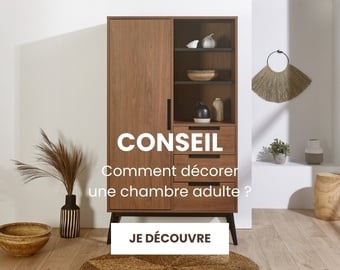
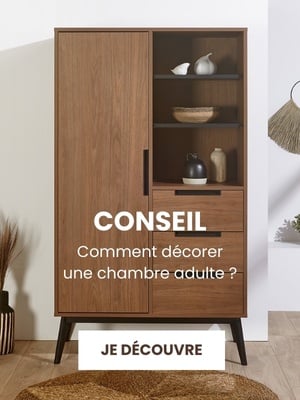
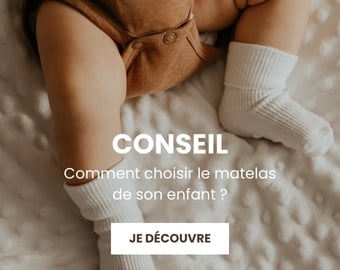
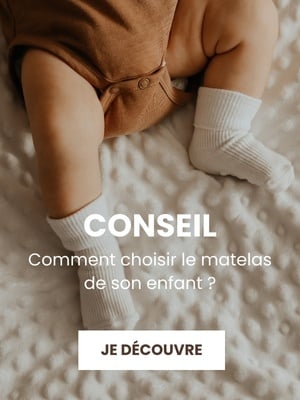

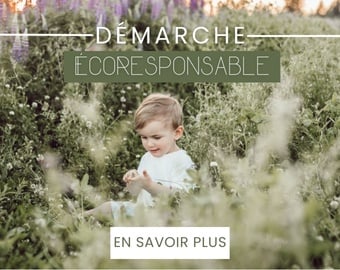


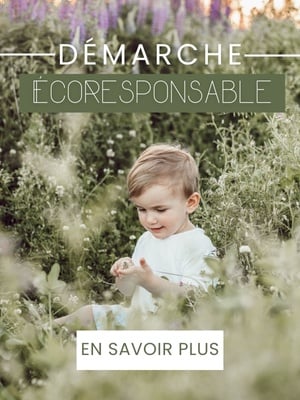

 How to attach a headboard (with or without drilling): quick and effective soluti
How to attach a headboard (with or without drilling): quick and effective soluti
 Waterproof sheet or mattress protector: the best solution by age group
Waterproof sheet or mattress protector: the best solution by age group
 27 Original, Useful, and Trendy Christmas Ideas for Teens 2025
27 Original, Useful, and Trendy Christmas Ideas for Teens 2025
 Christmas Activities for Baby: Creative Ideas for Home & Daycare
Christmas Activities for Baby: Creative Ideas for Home & Daycare
 When to put up Christmas decorations for extended magic?
When to put up Christmas decorations for extended magic?
